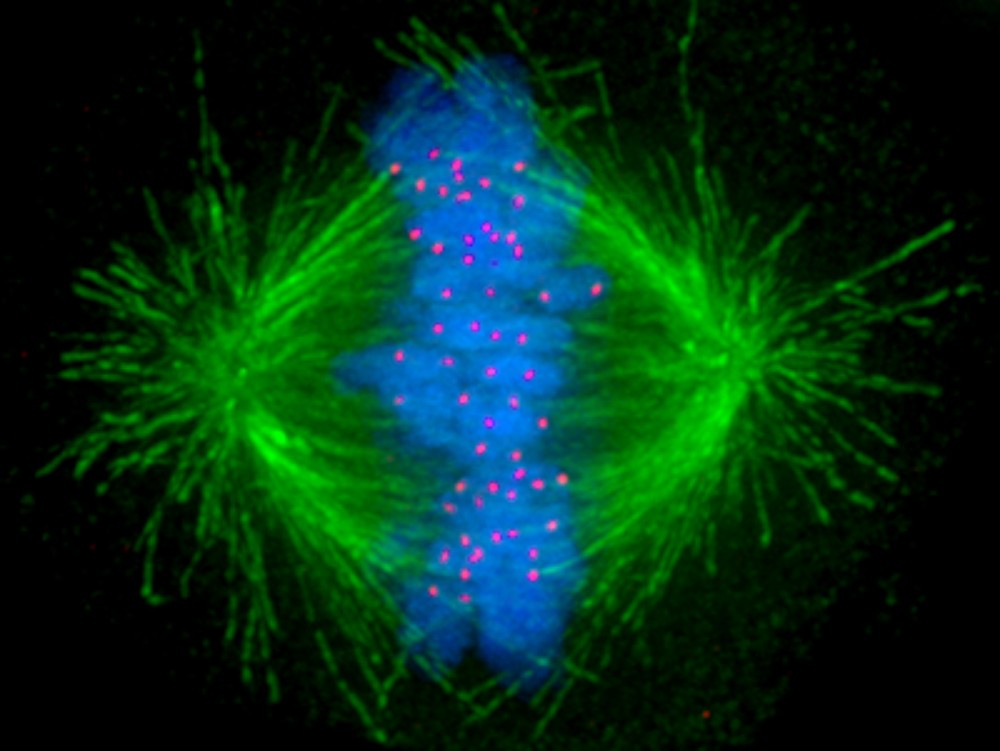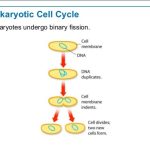The precise timing and formation of the mitotic spindle is critical to the success of eukaryotic cell division. Prokaryotic cells, on the other hand, do not undergo mitosis and therefore have no need for a mitotic spindle. However, the FtsZ protein that plays such a vital role in prokaryotic cytokinesis is structurally and functionally very similar to tubulin, the building block of the microtubules that make up the mitotic spindle fibers that are necessary for eukaryotes. The formation of a ring composed of repeating units of a protein called FtsZ directs the partition between the nucleoids in prokaryotes. Formation of the FtsZ ring triggers the accumulation of other proteins that work together to recruit new membrane and cell-wall materials to the site. FtsZ proteins can form filaments, rings, and other three-dimensional structures resembling the way tubulin forms microtubules, centrioles, and various cytoskeleton components. In addition, both FtsZ and tubulin employ the same energy source, GTP (guanosine triphosphate), to rapidly assemble and disassemble complex structures.
FtsZ and tubulin are an example of homology, structures derived from the same evolutionary origins. In this example, FtsZ is presumed to be similar to the ancestor protein to both the modern FtsZ and tubulin. While both proteins are found in extant organisms, tubulin function has evolved and diversified tremendously since the evolution from its FtsZ-like prokaryotic origin. A survey of cell-division machinery in present-day unicellular eukaryotes reveals crucial intermediary steps to the complex mitotic machinery of multicellular eukaryotes.
The mitotic spindle fibers of eukaryotes are composed of microtubules. Microtubules are polymers of the protein tubulin. The FtsZ protein active in prokaryote cell division is very similar to tubulin in the structures it can form and its energy source. Single-celled eukaryotes (such as yeast) display possible intermediary steps between FtsZ activity during binary fission in prokaryotes and the mitotic spindle in multicellular eukaryotes, during which the nucleus breaks down and is reformed.
| Mitotic Spindle Evolution | |||
| Structure of genetic material | Division of nuclear material | Separation of daughter cells | |
| Prokaryotes | There is no nucleus. The single, circular chromosome exists in a region of cytoplasm called the nucleoid. | Occurs through binary fission. As the chromosome is replicated, the two copies move to opposite ends of the cell by an unknown mechanism. | FtsZ proteins assemble into a ring that pinches the cell in two. |
| Some protists | Linear chromosomes exist in the nucleus. | Chromosomes attach to the nuclear envelope, which remains intact. The mitotic spindle passes through the envelope and elongates the cell. No centrioles exist. | Microfilaments form a cleavage furrow that pinches the cell in two. |
| Other protists | Linear chromosomes exist in the nucleus. | A mitotic spindle forms from the centrioles and passes through the nuclear membrane, which remains intact. Chromosomes attach to the mitotic spindle. The mitotic spindle separates the chromosomes and elongates the cell. | Microfilaments form a cleavage furrow that pinches the cell in two. |
| Animal cells | Linear chromosomes exist in the nucleus. | A mitotic spindle forms from the centrioles. The nuclear envelope dissolves. Chromosomes attach to the mitotic spindle, which separates them and elongates the cell. | Microfilaments form a cleavage furrow that pinches the cell in two. |
In both prokaryotic and eukaryotic cell division, the genomic DNA is replicated and each copy is allocated into a daughter cell. The cytoplasmic contents are also divided evenly to the new cells. However, there are many differences between prokaryotic and eukaryotic cell division. Bacteria have a single, circular DNA chromosome and no nucleus. Therefore, mitosis is not necessary in bacterial cell division. Bacterial cytokinesis is directed by a ring composed of a protein called FtsZ. Ingrowth of membrane and cell-wall material from the periphery of the cells results in a septum that eventually forms the separate cell walls of the daughter cells.


